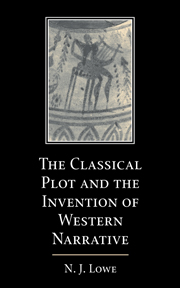4 - The classical plot
Published online by Cambridge University Press: 22 September 2009
Summary
Let us recap. Plot is a way of coding worlds into games and games into serial arrays of narrative bits. Two things particularly determine how a reader will shape and order an internal model of the story assembled as the text unfolds: the choice and sequence of the textual bits themselves, and the contents and rules of the narrative universe they describe. And all through this readerly process of piecing the story back together, two different but simultaneous pictures of the story are being built up in the reader's mind: an inside, timelike view of the events as they unfold one after another, and an outside, timeless overview of the shape of the story as a whole. The art of plotting lies in keeping these two pictures interestingly different until the final pieces are in place and they fuse into one; while its science lies in taking advantage of the cognitive structures readers can be expected to use in converting a text into the vivid conceptual experience of an imaginary world. In the last two chapters, we have looked at these aspects in turn.
It remains to expand the second term in my title. I use the word classical in its regular ahistorical sense to mean a way of doing things that, while not mandatory, is sufficiently paradigmatic for it to be either consciously accepted or deliberately rejected; a way, moreover, enshrined in certain canonical exemplars at the source and centre of the genre or tradition; and which, while perhaps obsolete in practice, is still perceived as a mainstream, orthodox, accepted way to proceed.
Information
- Type
- Chapter
- Information
- Publisher: Cambridge University PressPrint publication year: 2000
